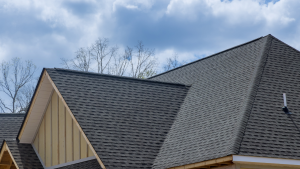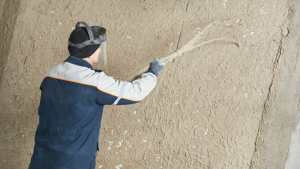Stucco, which is popular and inexpensive, may be used to coat both indoor and exterior walls. There are several colors available for it. and may be applied on brick, block, stone, and other kinds of walls.
Stucco is a smooth-surfaced material made from sand and cement. This product is waterproof and scratch-resistant and can be applied quickly and simply.
Stucco is also an excellent roofing material. It’s easy to clean and has a high R-value, so it keeps heat inside during the winter and outside during the summer.
Stucco is a versatile material that may be used on both residential and commercial structures.
Here are some things to remember: if you’re considering using stucco as an exterior or interior wall covering.
1. Clean Stucco in Spring
Because of the material’s extreme porosity, stucco needs meticulous cleaning. Ideally, the material should be washed in the spring.
The warmer spring and summer temperatures will aid in opening the plaster pores. You may save the hassle of cleaning the stucco in the fall by washing it in the spring.
2. Use a Special Stucco Cleaner
Cement and sand are the two primary components of stucco. Cement will start to crumble when sand gradually wears away.
To ensure mold is not developing on the stucco, clean it with a specific cleaner.
There are many different types of stucco cleaners, including spray and powder. Use the cleaning agent only as much as necessary and per the manufacturer’s recommendations.
3. Apply Stucco Primer Before Stucco
Because stucco is porous, it will absorb water. If the stucco absorbs too much water, it will degrade. You don’t want mold to develop on the stucco.
To prevent this, use a stucco primer before applying the stucco material. A stucco primer will help absorb water to prevent it from being absorbed by the stucco.
Furthermore, the primer will help in the closing of the pores in the stucco. You may start applying the stucco material immediately without waiting for the primer to harden.
4. Check the Stucco Sealer
The porous structure of stucco enables water absorption. The stucco material must be sealed to prevent moisture from accessing the roof while it is being fitted.
Use a stucco sealer to make the stucco material waterproof. The stucco sealer will also help to improve the material’s weather resistance.
Stucco sealer is frequently available in a variety of colors. A stucco sealer that matches your house’s outside, or interior paint color should be available.\
5. Apply stucco on the home’s exterior.
Stucco is an excellent choice for exterior walls. It will help to minimize the entrance of moisture and water into the home. Additionally, the stucco will assist in the cooling of the house throughout the heat.
The finest periods to apply stucco to the outside of a property are late spring or early fall. You should use the same stucco that you would for inside walls.
If you use a stucco primer and sealer, you can apply the outside stucco material in a single coat.
Because stucco is a versatile material, it may cover the outside of your home. For longer-lasting results, use the proper primer and sealer, as well as complete stucco cleaning.




